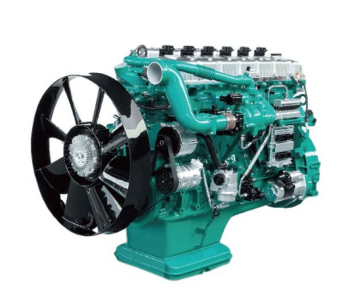May. 29, 2023

Regular maintenance of engines is extremely important, as many professional mechanics have stated that engine-related issues resulting from poor maintenance account for 50% of total vehicle breakdowns they handle. It is evident that engine maintenance plays a crucial role in extending the lifespan of vehicles. Engine components should not only be maintained during routine maintenance intervals but also undergo inspections and maintenance when driving in areas with high humidity or excessive dust.
Intake and Exhaust System Inspection and Maintenance
If a vehicle frequently operates in dusty or low air quality conditions, it is important to clean the intake pipes and regularly replace or clean the air filter to ensure unobstructed airflow. The intake pipe is vital for the engine's proper functioning, and if it becomes excessively dirty, it can reduce efficiency, resulting in the engine operating outside its normal power output range and accelerating wear and aging. It is advisable to avoid areas with high dust levels. Additionally, pay attention to replacing the cabin air filter. The following components should be checked regularly:
(1) Check for loose assembly bolts and nuts in the intake and exhaust systems.
(2) Inspect brackets, clamps, hoses, and gaskets for signs of damage, wear, deterioration, or hardening.
(3) Check for air leaks, rust between joints, and rust or cracks at weld seams.
(4) Check for air leakage, oil leakage, and abnormal noises in the turbocharger.
(5) Ensure the surface of the intercooler is clean and there are no leaks.
(6) Inspect the muffler, exhaust pipes, and other components for rust or severe corrosion.
(7) Check if the catalytic converter sensors and wiring harness are burnt or damaged due to high temperatures. If necessary, rewrap them to protect them in high-temperature areas.
(1) Check the engine oil level weekly and maintain the correct oil level.
(2) After starting the engine, check if the oil pressure is normal.
(3) Inspect the oil filter for proper functioning.
(4) Check if the crankcase breather is clogged.
(5) Inspect for leaks in the following components: crankshaft seals, crankcase, oil filter, oil passage plugs, sensors, and valve covers.
(1) Check the coolant level: Ensure the coolant reservoir is at the correct level, and if it is too low, replenish it promptly.
(2) Check the pipe connections for any signs of leakage.
(3) Inspect the radiator: In a properly functioning radiator, the temperature should be consistent throughout when the vehicle is in motion. If one side is significantly cooler than the other, it indicates internal blockage. Connect the radiator to a 2 kg pressure water hose in reverse flow to flush it. In case of severe blockage, use a small amount of cleaning agent and observe for leaks.
(4) Thermostat inspection: Removing the thermostat is not a solution to prevent high water temperature. A properly functioning thermostat does not cause overheating, and prolonged engine operation at low temperatures is also harmful. Additionally, many engine thermostats have dual-action. When the thermostat is closed, it forces the coolant to circulate in a small loop, and when it opens, the small loop closes while the coolant flows through the main loop. If the thermostat is not installed, the flow through the main loop is minimal due to localized resistance, leading to increased water temperature.
(5) Water pump inspection: Water pumps can fail due to leakage, lack of rotation, or impeller corrosion. "Lack of rotation" refers to a situation where the water pump impeller cannot reach the corresponding speed when the engine reaches a certain RPM, resulting in poor water circulation.
(6) Fan inspection: The fan is a key component of the cooling system. Some vehicles have replaced fixed fans with electromagnetic fans or fans equipped with silicon oil clutches. These fans operate minimally when the engine is cold and reach maximum cooling efficiency when the engine is hot. The main faults of silicon oil clutch fans are oil leakage, while electromagnetic fans can experience issues with temperature switches, wiring, and electromagnetic coils. In addition to using water as a cooling medium, engines dissipate some heat through exhaust and oil, but the convective airflow around the engine is indispensable. Therefore, when checking for engine overheating, do not forget to inspect the exhaust system (especially for vehicles with catalytic converters) for smooth flow and ensure the oil and transmission oil cooling devices are intact. Also, pay attention to the airflow around the engine, especially the air deflector (commonly known as the fan shroud).
(7) Belt inspection: Check for signs of interference wear, abnormal deflection, and promptly adjust or replace if necessary.
(8) To prevent cooling system failures, proper maintenance is crucial. This includes checking the system's seals, fan belt tension, thermostat sensitivity, and coolant levels, while ensuring an adequate supply of coolant. It is also important to clean the radiator and remove any scale or deposits that could affect its cooling efficiency.
(1) Check the fuel tank and ventilation pipe: Inspect the tank surface for normal conditions, oil leaks, and ensure the ventilation pipe is not kinked. Check if the pressure gauge on the tank is functioning properly.
(2) Check the fuel and air lines for any signs of kinks, damage, leaks, or frost formation.
(3) Inspect the fuel filter and air filter: Check for damage, oil leaks in the fuel filter, and air leaks in the air filter. Follow the recommended procedure for draining and replacing the fuel and air filters.
(4) Inspect other components of the fuel supply system: Check for oil leakage in the high-pressure pump and common rail, and inspect the nozzles and pressure relief valve for air leaks or frost formation.
Contact us for more information about FAWDE: https://www.fawde.com/
Tel.: +86 510 8501 4990 ext.8356
Mob.: +86 13914166873
Fax: +86 510 8599 7974
E-mail: info_fawde@fawde.com.cn
Add.: 98# Yongle East Road, Wuxi, Jiangsu, China.